BYD Seal India review: Still want that luxury sedan?
Chinese EV maker’s third product is by far its best, and enough to warrant serious consideration.
Published on Mar 13, 2024 08:00:00 AM
41,430 Views
Follow us on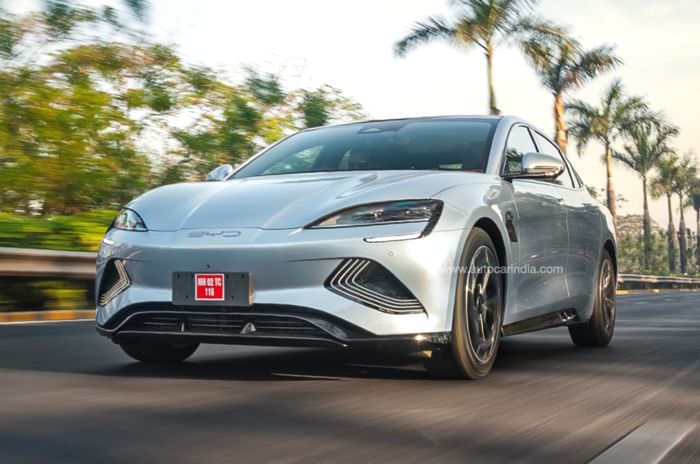
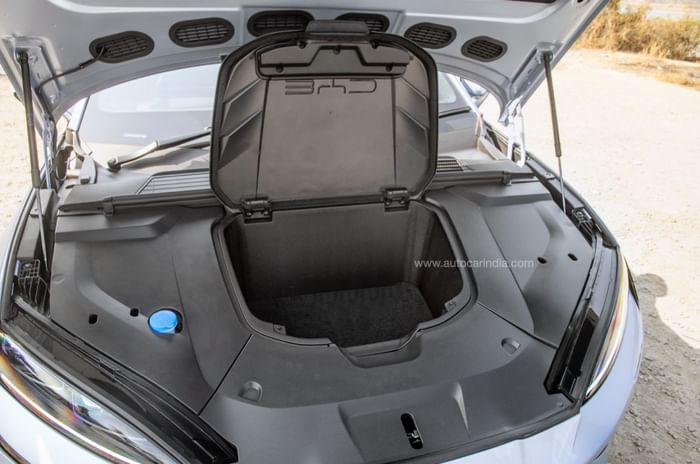
There's a nifty little 50-litre frunk under the bonnet.

The centre console has physical controls for volume, drive modes, and a few other vehicle functions
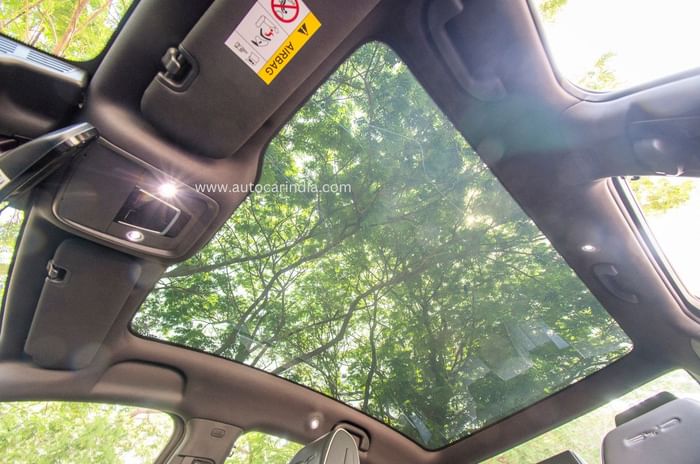
The tinted glass roof heats up the cabin after long hours under the sun.
We Like
- Disruptive price
- Strong, linear performance
- Interior and features
We Don't Like
- Small dealer, service network
- Glass roof heats up cabin
- Touchscreen HVAC controls
If the letters B, Y, D don’t immediately strike a chord with you, that’s okay. They stand for Build Your Dreams and are the name of a Chinese car brand whose India presence has been limited at best. But what if we told you that for a time last year, they sold more EVs than Tesla, and that if you combine EVs and PHEVs, they’re number one in the world? Moreover, their blade cell LFP batteries are regarded to be the best around, and are used by numerous other carmakers, including, very soon, Mahindra.
But back to India, and progress has not been brisk. The E6 was a forgettable MPV that until recently was only available as a taxi, while the far more capable Atto 3, unfortunately, gets lost in a sea of similar-sized electric crossovers. This new offering, the Seal, might be the one to make you sit up and take notice, however. It’s a premium executive sedan with a really attractive price tag and no direct rivals in India for the moment, which means it has a slice of the market all to itself. But as you’ll soon read, that’s not the only reason it has immense potential.
BYD Seal exterior design
It may not have rivals here, but globally, the Seal is a challenger to the Tesla Model 3, and it's easy to see that in its similar dimensions and appearance. For better context, its 4,800mm length and 2,920mm wheelbase are near identical to those of the long-wheelbase BMW 3 Series, and that should give you an idea of the buyers it’s aimed at.
| BYD Seal Price, Mileage, Specifications, Features and Variants | |
|---|---|
| Brand | BYD |
| Model Name | Seal |
| BYD Seal Price | ₹ 47.18 - 60.94 lakh |
| BYD Seal Range/Mileage | Electric : 510 - 650km |
| BYD Seal Specifications | Sedan | 5 doors | 5 seats View All Specs |
| BYD Seal Features | LED headlight | 15.6-inch Touchscreen display | 9 airbags View All Features |
| BYD Seal Variants | EV Dynamic | EV Premium | EV Performance View All Variants |
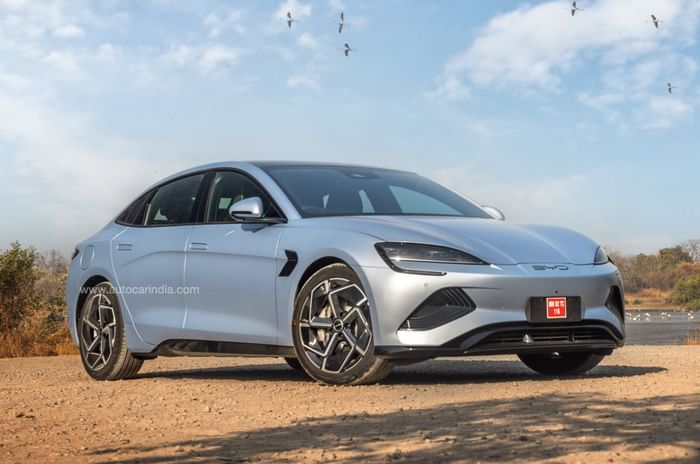
Its 145mm of ground clearance might sound like cause for concern, and while you should be careful over bigger speed breakers, in our day of testing it didn’t make contact even once. And what electric sedans lack in ground clearance, they make up for with aerodynamic efficiency, which has a huge impact on an EV’s range. With its sleek shape and flush door handles, the Seal has a 0.219 coefficient of drag (a Mercedes EQS, the second-slipperiest car in the world, is 0.202).
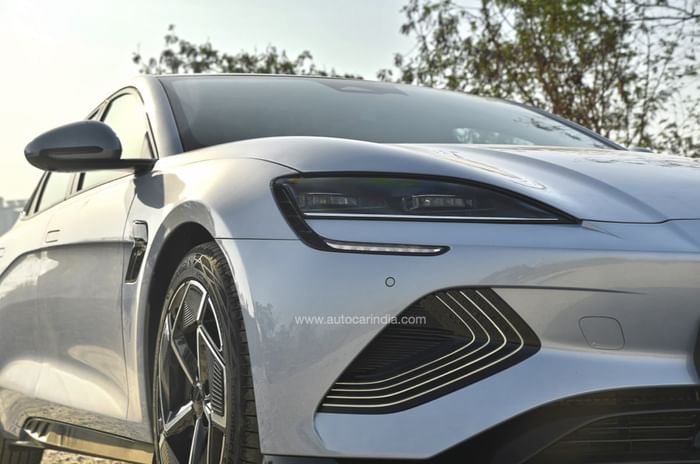
Its focus on aero hasn’t come at the cost of design, however, as this ‘ocean inspired’ sedan has a lot of interesting features. The LED DRLs in the black panels on the front bumper are meant to resemble ripples in water, and there are discreet lines across the bonnet and sides, smart 19-inch aero-efficient alloys, and black-ridged side skirts under the doors. The curved roofline ends in a high boot deck, with organic connected LED tail-lamps and a surprisingly sporty rear diffuser. The tight gaps in the wheel arches help give it a purposeful stance, and though somewhat understated, it’s a very elegant shape. It's available in four colours – Atlantis Grey, Aurora White, Cosmos Black and Arctic Blue.
BYD Seal interior design
Where the E6’s interior was too basic and the Atto 3’s went overboard with polarising styling elements, the Seal strikes a neat balance that looks quite sophisticated. More than the flowing design, however, it’s the quality that’s a pleasant surprise, and a huge step up from even the Atto 3. Leatherette surfaces abound, with rich feeling piano-black plastic and metallic trim. Switchgear feels solid and well damped, and there’s clever use of space – like the open space under the centre console, the two big rubberised wireless phone chargers and the deep covered storage bin.

Dominating the experience is the 15.6-inch touchscreen that comes with BYD’s signature special move – the ability to motor-rotate between landscape and portrait orientation. It’s a shame the AC controls are all buried in a sub-menu of this screen though, because there are a great many functions.
That aside, there are physical controls for volume, drive modes, and a few other vehicle functions, while drive state selection is via a smart crystalline toggle. The steering wheel too houses an intuitive set of context-sensitive buttons, and the 10.25 digital dials behind it does put the relevant info front and centre.
.jpeg?w=700&c=0)
BYD Seal space and comfort
The quilted, heated and ventilated front seats are big and plush, and though largely comfortable, do feel short on lumbar support. It’s the back seat that’s of greater interest though. You have to lower yourself under the roof and onto the bench, which is quite close to the battery-pack floor, but once in place, comfort is tremendous. It should be a knees-up seating position, but with a long seat squab and heavily reclined backrest, you never feel it.
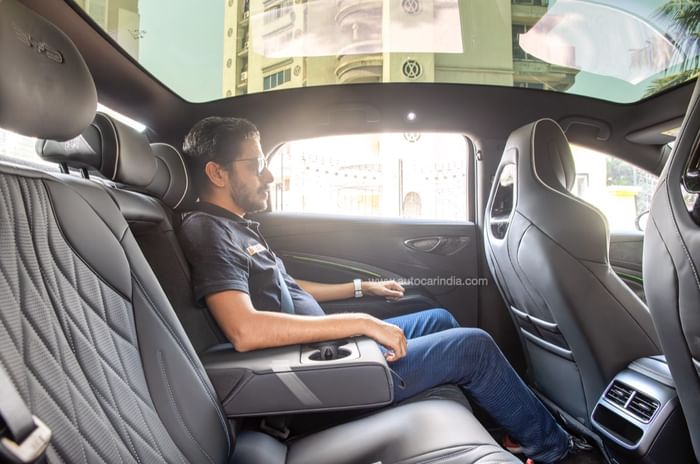
Leg room is immense, although the high floor means foot room under the front seats is limited, and thanks to the fixed glass roof that extends way back, head room is good too. That said, though the glass is heavily tinted, the cabin gets quite hot after a long spell of driving under the sun, but you can buy an internal shade as an accessory.
As for luggage, you get a usable 50-litre frunk and a reasonable 400-litre boot with an additional covered space underneath. However, what probably won’t go down so well is the lack of a spare tyre; you only get a puncture repair kit.

BYD Seal features and safety
The BYD Seal’s features list is vast, and impressively, most of it is standard across the three available variants. Many of these are controlled via the touchscreen, which is truly impressive, and really makes use of its display real estate. The graphics are incredibly fluid and high in resolution, with great responsiveness, no matter the app. A highlight has to be the 360-degree camera feed, which looks great, and can even be kept on screen while you’re driving. A lowlight is the aforementioned HVAC controls, which includes the seat temperature, and you adjust the vents like in the Porsche Taycan. A fun way around this is the ‘swing’ function, which constantly moves the flow of air around like a table fan.
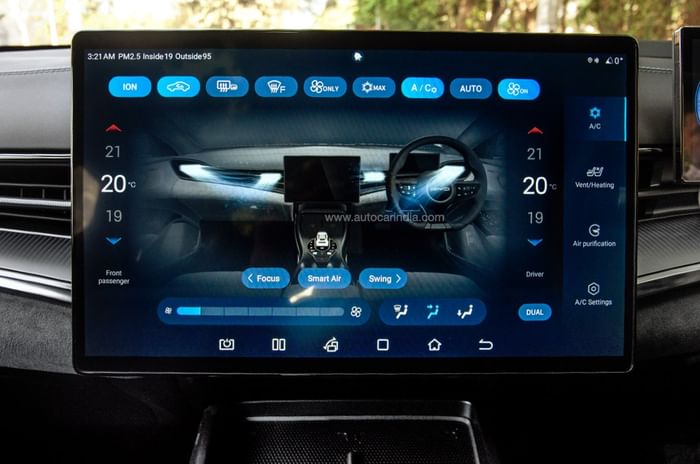
There’s a mix of USB A and C ports, Android Auto is wireless (though CarPlay is wired), the voice assistant recognises the Indian accent well, and the Dynaudio music system is really good. Other feature highlights are a powered tailgate, informative heads-up display, negative-ion air purifier and the option to use an NFC card key. On the safety front, too, the list is long, with 10 airbags, front and rear parking sensors, driver attention monitor, electronic parking brake with auto hold and a comprehensive suite of radar and camera-based ADAS features.
BYD Seal battery, range and performance
There are three powertrain combinations on offer for the BYD Seal in India. Dynamic gets you a 61.44kWh (net) battery with a single, rear-mounted motor and 204hp, Premium switches up to a larger 82.56kWh battery with a 313hp motor, while Performance further adds a front motor for AWD and a sportscar-like 530hp output. The Dynamic, expectedly gets the lowest range of 510km on the New European Driving Cycle (NEDC), while the twin-motor Performance is rated at 580km. The mid-range Premium we’re driving today has the highest range of 650km.
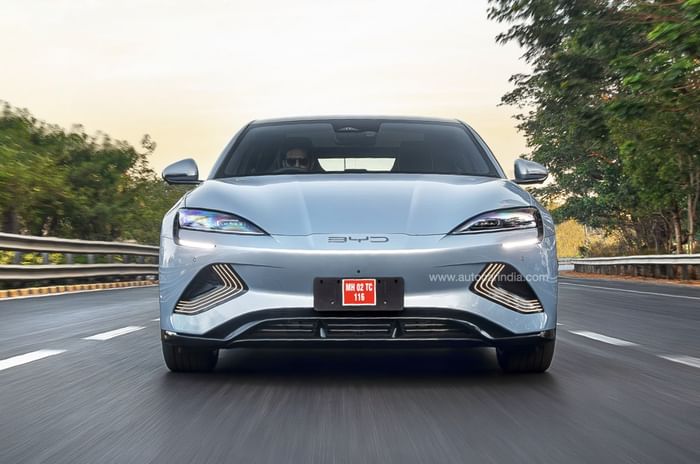
The larger battery can be charged at up to 150kW on a DC fast charger (a claimed 0-80 percent in just 45 minutes), while the smaller one does 110kW. On an AC charger, however, all models max out at a disappointingly slow 7kW. Another mention has to go to BYD’s blade-cell LFP battery pack, which, in the Seal, is integrated into the chassis for greater safety and rigidity.
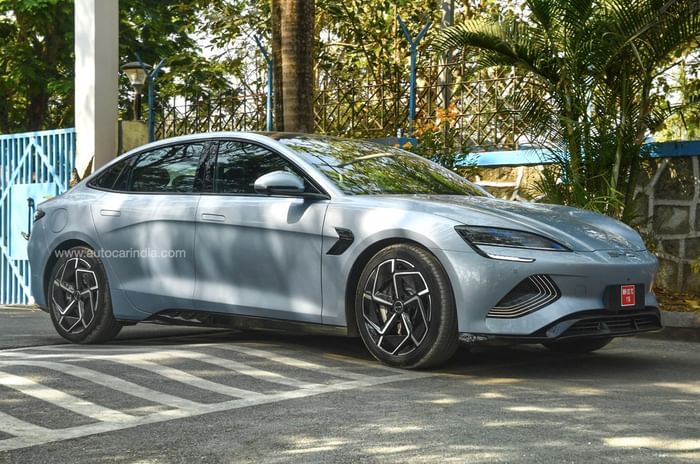
More than the outright performance of this 313hp, 360Nm BYD Seal Premium (the onboard telemetry showed us a sub-6-second 0-100kph time), it’s the nature of the power delivery that impresses. Unlike the on/off acceleration of most EVs, torque in the Seal rolls in progressively, in an almost ICE-like way, and it does so without robbing you of that addictive punch you expect from an EV. So even though power can be meted out gently should you desire, press more urgently and you’ll get the full dose. It transforms the driving experience, and frankly makes some other EV powertrains feel downright rudimentary.
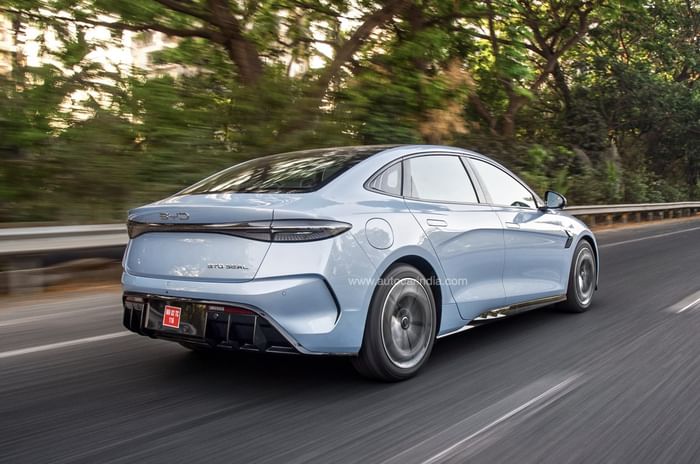
There are three drive modes, but all can feel strong if you press the right pedal hard enough, thanks to this clever programming of the power delivery. The real difference lies in the strength of the regen, which though you can set it manually from within the touchscreen, varies considerably between modes.
BYD Seal ride comfort and handling
The BYD Seal rides on independent coil-spring suspension all round, which in combination with the stiff chassis, gives it a mature and sophisticated ride quality. In fact, it feels like a European car, solid and hefty (the car does weigh 2,055kg), if also erring on the firm side. It deals with ruts and potholes really well, albeit with a slight thunk thanks to those 19-inch wheels, though the real benefit is its rock-solid high-speed stability.

This is also helped by a steering that feels weighty and reassuring, but not to the point of being effortful at low speed. That’s because, like the power delivery, there’s a fluidity to it that feels satisfying, despite this not being the quickest, sharpest or most feelsome steering around. What’s more, the stiff chassis, low centre of gravity, well-judged suspension and rear-drive layout give it a balanced, neutral dynamic that’s really fun around a twisty road.
BYD Seal price and verdict
And then you get to the price – Rs 41 lakh for the Dynamic, Rs 45.55 lakh for the Premium and Rs 53 lakh for the Performance (all ex-showroom). As we mentioned up front, it has no direct rivals, the closest sedan being the Rs 72.50 lakh BMW i4. The price is on par with our 2024 Car of the Year, the impressive Hyundai Ioniq 5, which does offer better practicality. But that car has the tax benefit of being locally assembled, while the Seal is a CBU import that pays full duty.
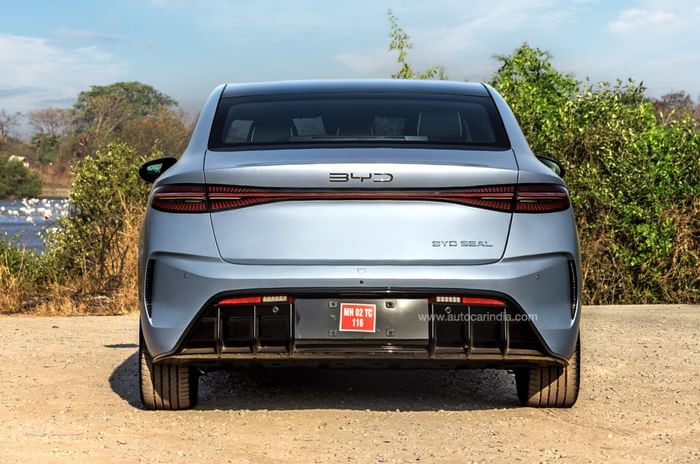
However, you feel about the Chinese, you have to hand it to them for delivering a knockout product-to-price ratio, especially when it comes to EVs. And what a product it is this time! Appealing from both the driver’s seat and the rear, it’s big on tech, high on quality, disruptively well priced and, to these eyes, rather attractive too. If nothing else, it is sure to give luxury sedan buyers something to think about. It’s uniquely positioned too, and if BYD hasn’t managed to make a strong enough dent in our market thus far, they should put all their efforts behind the Seal, because it has the potential to do just that.
Tech Specs 
Copyright (c) Autocar India. All rights reserved.


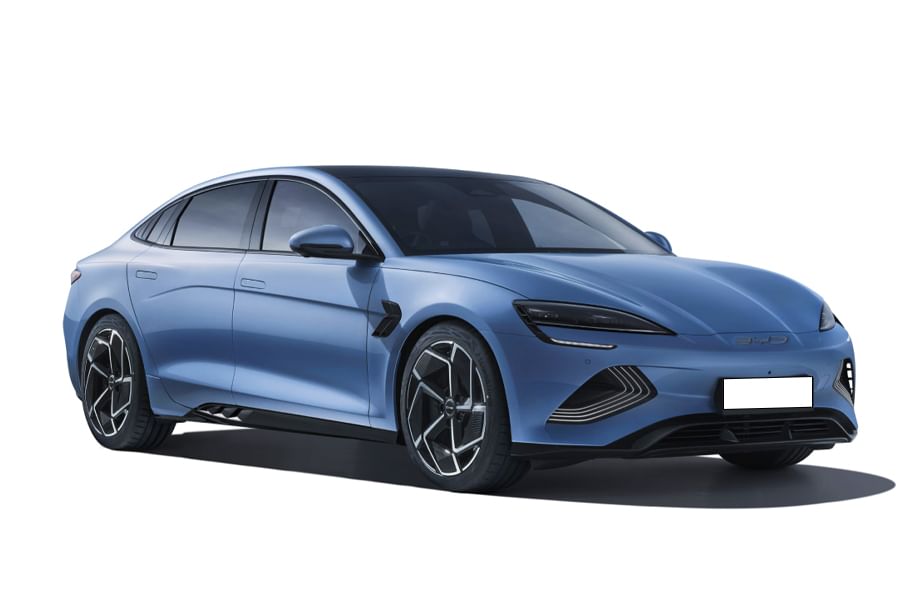



 Price
Price Engine
Engine Transmission
Transmission Acceleration
Acceleration Body
Body Suspension
Suspension Brakes
Brakes Dimensions
Dimensions Range
Range
Comments
Member Login
Personal Details
No comments yet. Be the first to comment.